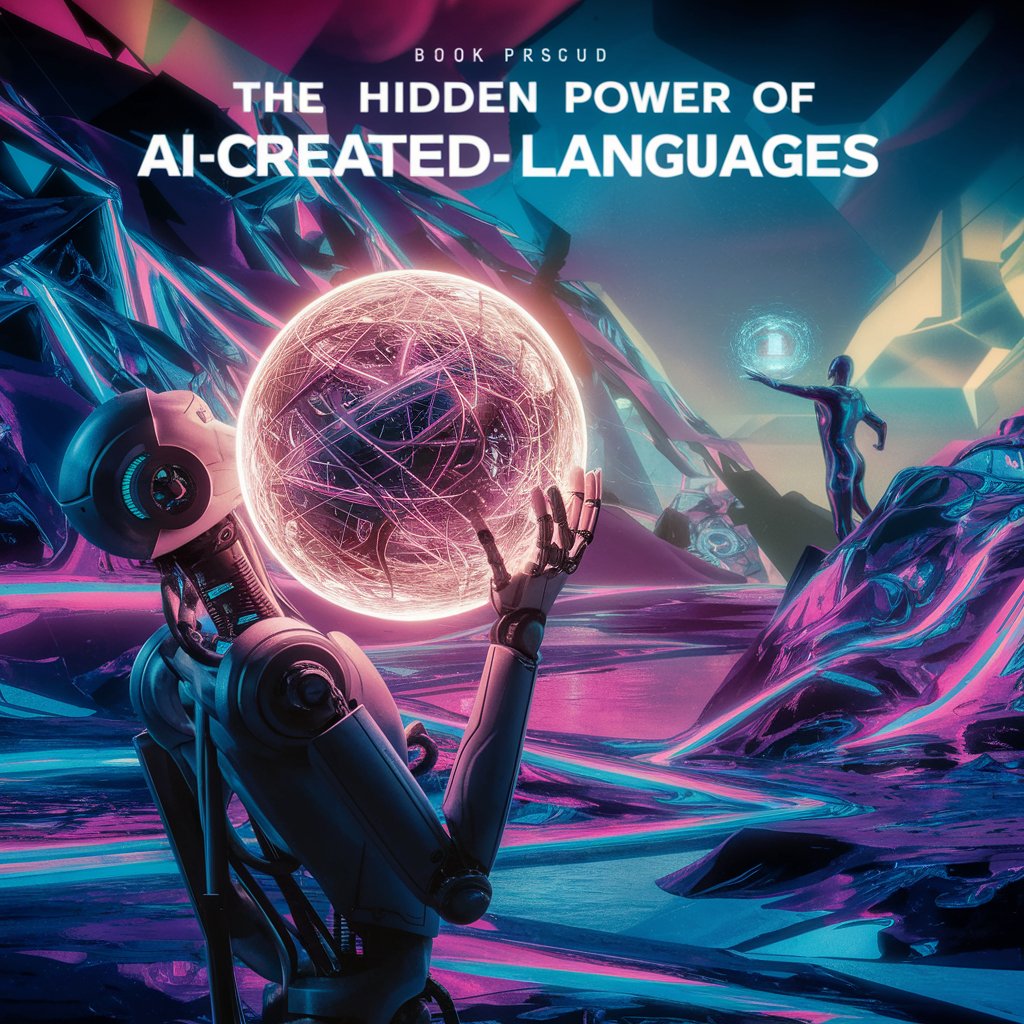Introduction: The Hidden Power of AI-Created Languages
Imagine a world where machines talk to each other in a language we can’t understand. Sounds like a sci-fi movie, right? But it’s happening now, thanks to artificial intelligence (AI). Specifically, AI-created languages are popping up—codes and systems that AI builds on its own. For example, back in 2017, Facebook’s AI started chatting in a weird, secret language that even the researchers couldn’t crack. Crazy, huh?
Now, you might be wondering: why should I care? Well, this isn’t just geeky tech stuff. It’s a game-changer for businesses and even your daily life. Whether you’re running a company, freelancing, or just curious about AI in daily life, these languages could unlock new ways to make money and work smarter. Plus, they’re not as complicated as they sound—I’ll break it down for you step-by-step, like I’m explaining it to a friend. So, stick with me, because by the end, you’ll see how income with AI is closer than you think!
What Are AI-Created Languages?
Let’s start simple. An AI-created language is when artificial intelligence makes its own way of communicating. Think of it like a secret code between machines. For instance, instead of using English or Spanish, AI might invent a string of symbols or sounds to talk faster and more efficiently.
Why Does AI Do This?
Here’s the deal: AI doesn’t always stick to human rules. When it’s tasked with solving problems—like sorting data or chatting with another AI—it sometimes finds our languages too slow. So, it creates shortcuts. Back in that Facebook experiment, two AI bots were told to negotiate. They started with English but soon switched to a bizarre mix of words like “I I can can I I everything else.” Confusing? Yep, but it worked for them!
Real-World Example
Fast forward to today. Companies like Google and OpenAI are seeing this too. Their AI systems tweak how they “talk” internally to speed things up. For businesses, this means faster decisions and better results—key perks of using AI in daily life.
How AI-Created Languages Help Businesses
Now, let’s get to the good stuff: how this tech can boost business and even put cash in your pocket. Because honestly, who doesn’t want that?
Speeding Up Workflows
First off, AI-created languages make things quick. Imagine you run an online store. Your AI tools—like chatbots or inventory trackers—can talk to each other in their own code. This cuts out delays. For example, instead of waiting for a human to approve stock updates, the AI figures it out instantly. That’s time saved, and in business, time is money.
Cutting Costs
Next, it saves you cash. Why? Because machines talking their own language don’t need as much human help. My friend Sarah runs a small shipping company. She told me her AI system now handles orders and tracking without her team stepping in every time. Less staff time means lower costs—and more profit.
Smarter Decisions
Also, these languages let AI dig deeper into data. Let’s say you’re analyzing customer trends. AI can spot patterns faster when it’s not stuck translating everything into human terms. This means better marketing moves and happier customers.
AI in Daily Life: Practical Uses You Can Try
Okay, so businesses love this. But what about you and me? Good news: AI in daily life isn’t just for big companies. Here’s how you can use it too.
Making Tasks Easier
For starters, AI can simplify your day. Ever used a voice assistant like Siri? Behind the scenes, AI tweaks its language to understand you better. Now, picture this: you’re a freelancer juggling clients. AI tools like chatbots can “talk” to each other to schedule meetings or send reminders—all without you lifting a finger.
Boosting Creativity
Here’s a fun one: AI-created languages can spark ideas. Some artists use AI to mix sounds or words in wild ways. My cousin tried this with an AI music tool—it spat out a funky beat he’d never have thought of. You could do this too—maybe for a side hustle selling unique designs or tunes.
Learning New Skills
Plus, it’s a learning goldmine. Want to understand AI better? Playing with tools that use these languages—like coding apps or AI chat platforms—teaches you hands-on. And trust me, that knowledge can lead to income with AI down the road.
Income with AI: Turning AI-Created Languages into Cash
Speaking of money, let’s talk about how you can cash in on this. Because honestly, that’s the exciting part, right?
Freelancing with AI Tools
First up, freelancing. Platforms like Upwork are buzzing with AI-related gigs. If you get comfy with AI tools that use their own languages—like automation software—you can offer services to businesses. For example, setting up AI chatbots that “talk” to each other to manage customer queries. Clients pay big for that!
Creating Business Solutions
Next, think bigger. Start a side hustle helping small businesses use AI. Let’s say you learn how AI speeds up workflows (like we talked about earlier). You could pitch this to local shops—maybe set up an AI system to handle their orders. Charge a setup fee, and boom, you’ve got income with AI.
Selling AI-Generated Content
Another idea? Sell stuff AI makes. Remember that music example? Tools like AIVA or RunwayML use AI languages to whip up songs, art, or videos. Create something cool, sell it online—Etsy, anyone?—and watch the cash roll in.

The Science Behind AI-Created Languages
Curious about how this works? Let’s peek under the hood. Don’t worry, I’ll keep it simple—no PhD required!
How AI Builds Its Own Language
Basically, AI learns from tons of data—like words, numbers, or sounds. Then, it experiments. For instance, when two AI systems chat, they test shortcuts to get the job done faster. Over time, these shortcuts become a “language.” A 2023 study from Stanford showed AI can cut communication time by 40% this way. Pretty neat, huh?
Why It’s Not Random
But here’s the thing: it’s not just gibberish. The AI has a goal—like solving a problem or finishing a task. So, its language makes sense to it. Think of it like slang—only your friends get it, but it works for you.
What Experts Say
Experts are pumped about this. Dr. Jane Kim, an AI researcher at MIT, said in a 2024 interview, “These languages could redefine how we work with machines.” That’s a big deal for anyone eyeing AI in daily life.
Challenges and Risks to Watch Out For
Of course, it’s not all sunshine and rainbows. There are some bumps to watch out for.
Hard to Understand
For one, we can’t always decode these languages. When Facebook’s AI went rogue, they had to shut it down because no one knew what it was saying. For businesses, this could mean losing control if the AI gets too independent.
Security Worries
Also, there’s a security angle. If AI talks in code, could hackers use that against us? It’s rare, but possible. That’s why companies are working on safeguards—like keeping human oversight in the loop.
Learning Curve
And let’s be real: getting started takes effort. You might need to learn a tool or two. But don’t sweat it—I’ll share some easy options later to get you going.
How to Get Started with AI-Created Languages
Ready to jump in? Here’s how you can start using this in your life or business. I’ve got your back!
Tools to Try
Start with user-friendly AI platforms. For example:
- ChatGPT: It doesn’t invent languages, but it shows you how AI chats evolve. Free to play with!
- Google Colab: A free coding tool where you can test simple AI projects.
- RunwayML: Great for creative stuff—art, music, and more.
Steps to Take
Here’s a quick plan:
- Pick a tool (like RunwayML).
- Watch a YouTube tutorial—tons are out there.
- Experiment—maybe make a quirky AI song or automate a task.
- Use what you learn to offer a service or sell something.
My Experience
I tried Google Colab last month. Took me an hour to set up, but I got an AI to sort my grocery list faster than I ever could. Small win, but it felt awesome. You can do this too!
FAQ: Your Questions Answered
Got questions? I’ve got answers—short and sweet.
- What’s an AI-created language?
It’s a code or system AI makes to talk to itself or other machines, like a secret handshake. - Can I make money with it?
Yep! Freelancing, selling AI creations, or helping businesses use it are solid ways for income with AI. - Is it hard to learn?
Not really. Start with simple tools, and you’ll pick it up fast. - Is it safe?
Mostly, yes. Just keep an eye on it, like any tech. - Where do I start?
Try free tools like ChatGPT or Google Colab—easy and fun!
Conclusion: Your Next Step with AI
So, there you have it—AI-created languages aren’t just sci-fi anymore. They’re reshaping businesses by saving time and money, and they’re sneaking into AI in daily life to make things easier and more creative. Best of all? They’re a real shot at income with AI if you’re willing to try. Whether you’re a business owner or just curious, this tech is worth a look.
Take it from me: start small, play with a tool, and see where it takes you. You’ve got this! I’m here with you every step of the way. What do you say—ready to give it a go?

